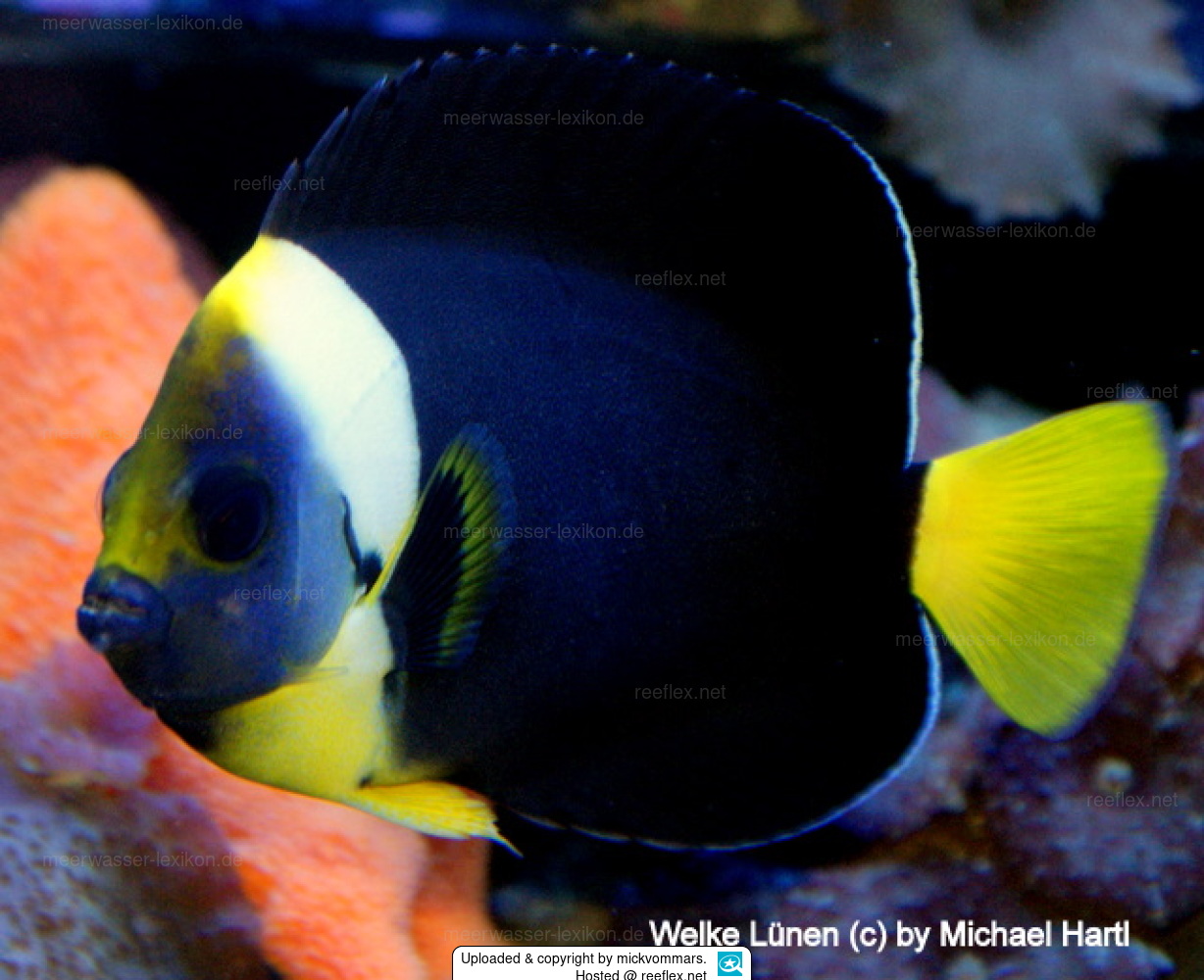Info
Chaetodontoplus meredithi also known as the Yellow-Finned Angelfish, Yellowtail Angelfish, Personifer Angelfish, Bluemask Angelfish or Queensland Yellowtail Angel is endemic to Australia. It occurs in tropical and warm temperate marine waters from northern Queensland to the central coast of New South Wales. It is also known from Lord Howe Island. The Yellowtail Angelfish inhabits coastal reefs and open bottoms with rock , coral, sponge, or seawhip outcrops to depths greater than 25 m. Juveniles often among sponges under jetties; they are mostly solitary swimmers, adults often in pairs. A few species occur in deep water, i.e., about 50 m.
The Yellowtail Angelfish has a blue head with yellow spots. Juveniles have a white band behind the head that darkens as the fish grows. The nape, breast and caudal fin are yellow. Overall the body is black. This is one of the few species of Angelfish where the males differ morphologically from the females. In this case, the males have a slightly longer body than females. Chaetodontoplus meredithi is often incorrectly identified and has become synonymous with Chaetodontoplus personifer. However they are two distinct species. The distinguishing mark between the two is the solid yellow tail on Meredithi and the Yellow with Black banded tail on Personifer.
While generally peaceful, it has been known to be hostile towards other fish, especially other Angels. The diet should consist of marine algae, high-quality angelfish preparations, mysis or frozen shrimp, and other meaty items.
Remarks:
Most large angelfish are well known for nipping at large-polyped stony corals and some soft corals as well as tridacnid clam mantles.
Order: Perciformes
Family: Pomacanthidae
Genus: Chaetodontoplus
Species: Chaetodontoplus meredithi
hma
The Yellowtail Angelfish has a blue head with yellow spots. Juveniles have a white band behind the head that darkens as the fish grows. The nape, breast and caudal fin are yellow. Overall the body is black. This is one of the few species of Angelfish where the males differ morphologically from the females. In this case, the males have a slightly longer body than females. Chaetodontoplus meredithi is often incorrectly identified and has become synonymous with Chaetodontoplus personifer. However they are two distinct species. The distinguishing mark between the two is the solid yellow tail on Meredithi and the Yellow with Black banded tail on Personifer.
While generally peaceful, it has been known to be hostile towards other fish, especially other Angels. The diet should consist of marine algae, high-quality angelfish preparations, mysis or frozen shrimp, and other meaty items.
Remarks:
Most large angelfish are well known for nipping at large-polyped stony corals and some soft corals as well as tridacnid clam mantles.
Order: Perciformes
Family: Pomacanthidae
Genus: Chaetodontoplus
Species: Chaetodontoplus meredithi
hma







 mickvommars
mickvommars




















